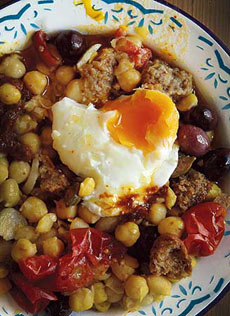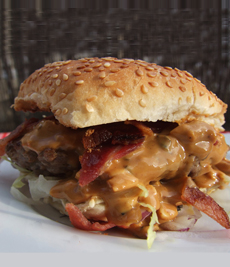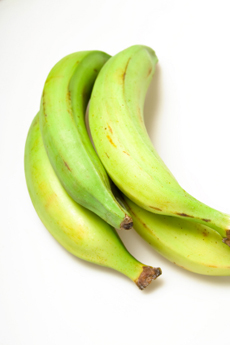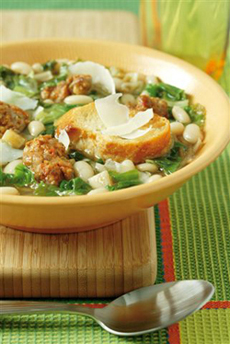|
Suddenly, everyone is talking about bone broth. Rich in nutrition, nourishing for body and soul, bone broth has long been used by cultures throughout the world, to sip straight or as cooking stock.
Yes, bone broth is an alternative to stock, a flavorful liquid made by slowly simmering chicken or turkey bones, cartilage and tendons (with some bits of meat). The difference is that while stock can be made in three or four hours, bone broth is simmered for 24 hours or more, extracting the maximum amount of nutrition from the bones.
Bone broth can be made from any type of animal bones, including fish. But Pacific Foods uses only the bones from organically raised, pastured or grass-fed animals. It is seasoned with onions, rosemary and apple cider vinegar.
The Bone Broth is available in six delicious flavors:
Organic Bone Broth Chicken
Organic Bone Broth Chicken with Ginger
Organic Bone Broth Chicken with Lemongrass
Organic Bone Broth Chicken Original
Organic Bone Broth Turkey
Organic Bone Broth Turkey with Rosemary, Sage & Thyme
|
|

A quick hot drink as well as a cooking ingredient, Pacific’s Bone Broth comes in six varieties. Photo courtesy Pacific Foods. |
On a cold winter day like today, it more than hits the spot. And it’s a great base for leftovers: We variously added leftover barley, chicken, pasta, rice, shrimp and veggies to turn a cup of bone broth into a light meal.
Sold in eight-ounce cartons, it is a hearty drink to sip it by the cup. Pour from the carton and enjoy instead of coffee or tea.
Want to cook with it? It’s also sold in 32-ounce cartons. You can cook beans and legumes, pasta, rice and other grains in it for added protein and flavor, or use it as a base for soup. You can garnish plane bone broth with a splash of basil oil or chili oil.
Why bone broth? Why now?
According to a 2014 study by NDP Group, more than seven out of 10 consumers are looking to add more protein to their diets. With high protein, low calories and a myriad of reported wellness benefits, it’s in demand by health enthusiasts, Paleo diet practitioners and CrossFit-ers, many of whom have taken up the practice of making bone broth from scratch. (Want to make your own? Here’s a recipe. Note that we have seen comments that cage-raised chickens tend to produce stock that doesn’t gel as well. So try to find bones from organic or free-range poultry.)
|

Turn bone broth into a meal by adding proteins and vegetables. Photo courtesy Wholesomeness.com.au. Here’s their recipe for beef bone broth. |
|
THE HEALTH BENEFITS OF BONE BROTH
Rich in amino acids and minerals and fat-free, the broth delivers 9 grams of protein per cup for only 35-40 calories. While the actual recipe simmers for days, you can enjoy this snack or first course in little more than 30 seconds.
If you’re fighting off a cold or the flu, homemade bone broth is excellent for speeding healing and recuperation from illness.
Digestion. The gelatin in bone broth is a hydrophilic colloid that attracts and holds liquids, including digestive juices, thus supporting proper digestion.
Pain. Bone broth contains chondroitin sulfates and glucosamine—the components of joint pain pills—plus other compounds from the boiled down cartilage. They reduce joint pain and inflammation. The amino acids in bone broth—arginine, glycine and proline—also have anti-inflammatory effects.
Bone Health. Bone broth contains high amounts of calcium, magnesium and other nutrients that help with healthy bone formation.
|
THE DIFFERENCES BETWEEN BROTH, BONE BROTH, STOCK & MORE
If you’re wondering how bone broth fits into the broth pantheon that includes aspic, bouillon, consomme and stock, here’s the scoop:
Broth. Broth is typically made with meat and can contain a small amount of bones. It is typically simmered for a far shorter period of time—45 minutes to 2 hours. The result is very light in flavor and thin in texture, although rich in protein.
Aspic. Aspic is jellied broth made from meat or fish stock. It is refrigerated, where it becomes solid, like gelatin; then is cubed and used as a relish for meat, fish or vegetable dishes. Or, it is used as a filler mold that holds meat, fish or vegetables.
Bouillon. Bouillon is a clear, thin broth made typically by simmering chicken or beef in water with seasonings. It can be consumed in this state, or used as a base for other dishes, sauces, etc. Bouillon can be made from mixed sources, e.g. chicken and vegetables. Bouillon (not to be confused with bouillon cubes) is a stock that is strained, and then served as a clear soup. It can be enhanced with other flavors—for example, sherry, herbs and spices—and this is the key difference between bouillon and plain broth.
Stock. Stock is typically made with bones and can contain a small amount of meat that adheres to the bones. The bones are often roasted before simmering, which improves the flavor. Stock is typically simmered for a longer time than broth, 3 to 4 hours. The result is rich in minerals and gelatin and more flavor than broth, extracted from the longer cooking time.
Consommé. Consommé is a clear liquid made by clarifying stock for a more elegant presentation. Typically, egg whites are added to the stock; the cloudy particles in the stock attach themselves to the egg whites and rise to the surface, where they are skimmed off. The word means “consumed” or “finished” in French, indicating a more finished soup than a stock or a broth. In classic French cuisine, a bowl of consommé was often served at the beginning of a meal.
Bone broth. Like stock, bone broth is typically is made with bones and the small amount of meat adhering to them. As with stock, bones are typically roasted first to improve the flavor of the broth. The key difference is that bone broth is simmered for a much longer time, 24 hours or more. This long cooking time helps to extract the maximum amount of minerals and other nutrients from the bones.
|
|










